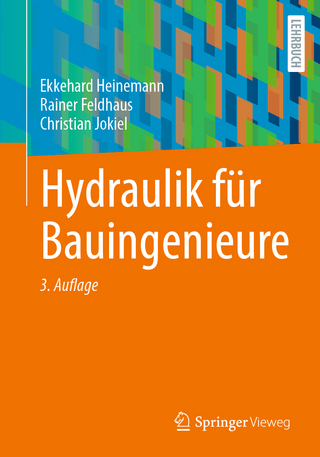
Ecological Risk Management
Springer Verlag, Singapore
978-981-336-933-7 (ISBN)
The book comprises four parts covering ecotoxicology, fisheries, wildlife management and conservation, and ecosystem-based management. It differs from other books in having its primary interest in human impacts on animals, plant, and ecosystems, while existing works in this area concentrate on the fate of toxic substances in the environments and their effects on humans. This book is unique in that it indicates various environmental issues that the theoretical ecology is potentially applicable without concentrating into any particular subject such as ecotoxicology or conservation biology.
Primary readers are undergraduate/graduate students, staffs of environmental consultant companies and environmental NPOs, and journalists. Readers will find this book useful for its abundant information on case studies of ecological risk management and consensus building in Japan.
Hiroyuki Matsuda is expertized in mathematical ecology, fisheries management, and environmental risk management. He developed an extinction risk assessment method used in Japanese vascular plant Red List, proposed Japan's first adaptive wildlife management for Sika Deer Management Plan of Hokkaido Prefecture, and proposed an idea to expand the seasonal fishing-ban area in Shiretoko World Heritage site during a nomination process. He was a leader of Global COE Program "Global Eco-Risk Management from Asian Viewpoints", past President of the Ecological Society of Japan, past President of the East Asian Federation of Ecological Societies, former President of the Society for Population Ecology, past Chair of the Fisheries Policy Committee of the Japanese Society of Fisheries Sciences, Director of the Japan Society of Ocean Policy. He is the first Japanese Pew Fellow for Marine Conservation since 2007, co-representative of Yokohama Urban Design Center of the Sea, chairperson of Japanese Coordinating Committee for MAB (Man and the Biosphere), a Board Member of Earthwatch Japan.
Chapter 1. Introduction: What is risk science?.- Chapter 2. How to determine the relief target for Minamata disease.- Chapter 3. Risk of radioactive contamination caused by the Accident of Fukushima Daiichi Nuclear Power Plant.- Chapter 4. How to assess ecological risks of trace metals in environment.- Chapter 5. Impact of reactive nitrogen and nitrogen footprint.- Chapter 6. Adaptive risk management of new coronavirus disease.- Chapter 7. How to convince purse seiners for sustainable fishery.- Chapter 8. Why is the tuna critically endangered and still sold in the market?- Chapter 9. Red List of Japanese vascular plants and Environmental Impact Assessment.- Chapter 10. Adaptive risk management of sika deer.- Chapter 11. Risk of avian collisions in wind turbines.- Chapter 12. Resource economics of exotic mongoose control.- Chapter 13. Beyond dichotomy in the protection and management of marine mammals.- Chapter 14. Management of human-bear conflict.- 15. Effects of dams on ecologicalrisk of inland fishes.- Chapter 16. Marine co-management plan of Shiretoko World Heritage.- Chapter 17. Marine co-management plan of Shiretoko World Heritage.- Chapter 18. Multi-species fisheries management.
| Erscheinungsdatum | 14.05.2021 |
|---|---|
| Reihe/Serie | Ecological Research Monographs |
| Zusatzinfo | 96 Illustrations, color; 13 Illustrations, black and white; VI, 314 p. 109 illus., 96 illus. in color. |
| Verlagsort | Singapore |
| Sprache | englisch |
| Maße | 155 x 235 mm |
| Themenwelt | Naturwissenschaften ► Biologie ► Ökologie / Naturschutz |
| Naturwissenschaften ► Biologie ► Zoologie | |
| Naturwissenschaften ► Chemie ► Technische Chemie | |
| Technik ► Umwelttechnik / Biotechnologie | |
| Schlagworte | adaptive population management • Bioassay • Ecosystem approach • ecotoxicology • individual risk • marine management • population risk • risk management and consensus building • risk tradeoff • Shiretoko world heritage • total diet study • wildlife and fisheries management |
| ISBN-10 | 981-336-933-7 / 9813369337 |
| ISBN-13 | 978-981-336-933-7 / 9789813369337 |
| Zustand | Neuware |
| Informationen gemäß Produktsicherheitsverordnung (GPSR) | |
| Haben Sie eine Frage zum Produkt? |
aus dem Bereich


